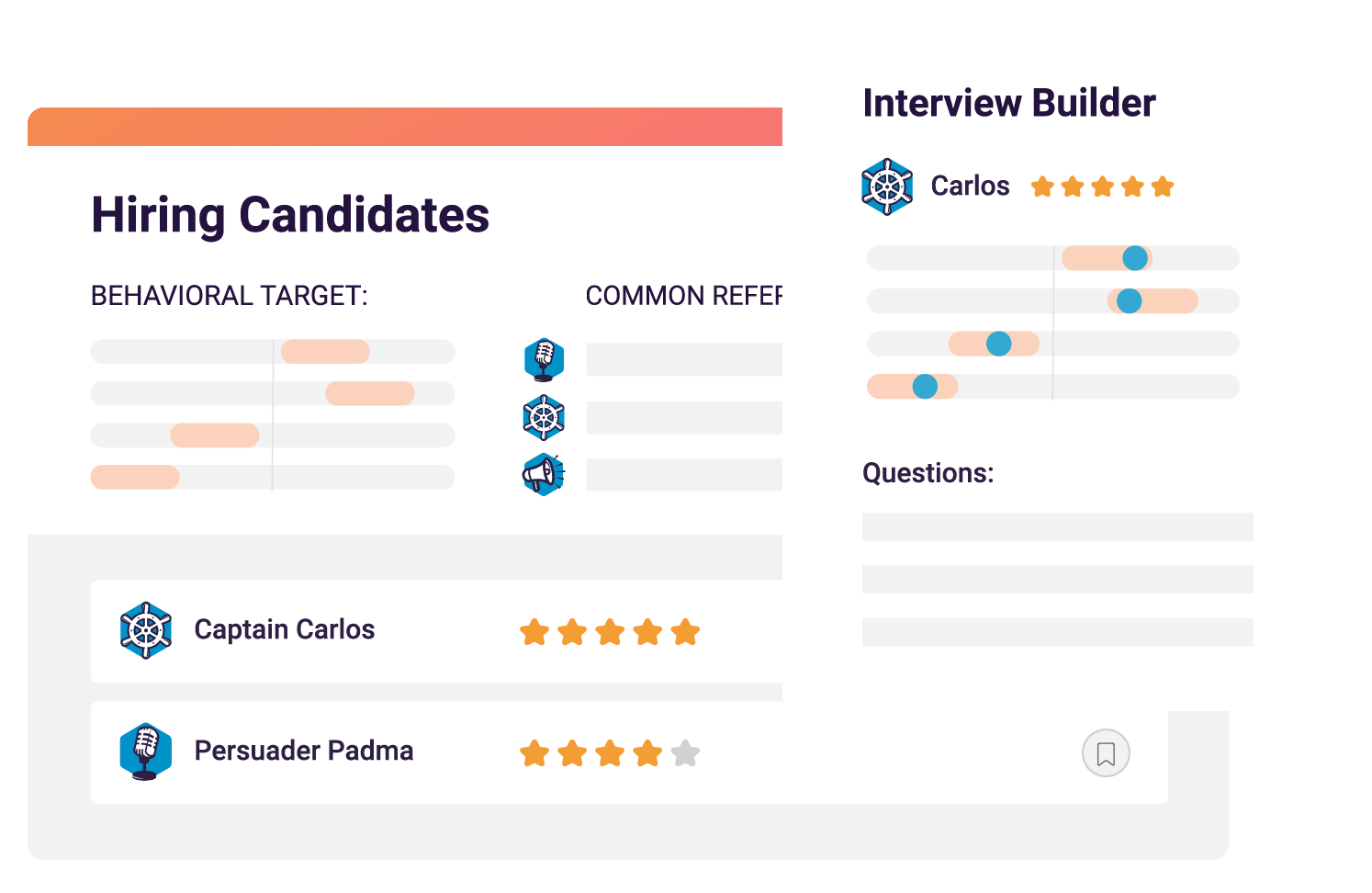Meetings are essential to a team’s communication, collaboration, and effectiveness. But with so many different kinds of meetings out there, from one-on-one meetings to all hands meetings, how do you know which one is the most effective for your needs? If you’re looking for a casual setting that will encourage your team to let their hair down and speak freely about what’s on their minds, there is no meeting better than the catch-up meeting.
But what exactly is a catch-up meeting? In this post, we’ll break down what it is, its benefits, and best practices for running effective catch-up meetings.
What is a catch-up meeting?
A catch-up meeting is an informal gathering between team members or between an employee and their manager to discuss recent progress, updates, and any issues that need attention. These meetings are typically held regularly and are designed to ensure everyone stays aligned, addresses any challenges, and maintains open communication.
This could refer to catching someone up on recent events in the office or project developments if they’ve been away, a recurring meeting to catch up on a specific project or client, or an informal gathering of two or more coworkers who haven’t spoken about anything beyond work and day-to-day business in a while. You may even have a catch-up meeting with a client on a monthly basis.
This article will focus on informal one-on-one meetings between coworkers or a manager and a direct report. This is a time for team members to discuss recent projects, both professional and personal, what’s going on in their lives, or whatever they like in order to build connections that are hard to form in the day-to-day grind of business. These kinds of catch-up meetings are especially important for remote teams who do not have as many opportunities to get to know each other outside of the context of work compared to a team that shares the same workspace.
A personalized leadership approach for each team member.
PI’s behavioral insights help leaders inspire and coach each employee in a way they truly connect with.
The benefits of catch-up meetings
If catch-up meetings don’t necessarily have to do with work, then why are they happening at work? Shouldn’t people focus on work when they’re at work?
Well, yes, that’s true. However, if your team doesn’t really know each other, they won’t be able to trust each other, and if they don’t trust each other, they’re not really a team. If a team member doesn’t feel connected to the team, it will lead to disengagement and dissatisfaction, which will negatively impact their wellbeing and potentially cause them to look for employment elsewhere. You can’t effectively team build if the makeup of your team is always changing.
Catch-up meetings build the rapport and trust that’s necessary for a team to function effectively and efficiently. They’re less formal than one-on-one meetings between a manager and direct report, and they can occur between any group of employees, though a manager can also choose to facilitate these catch-up meetings.
Catch-up meetings help team members get to know each other outside of work. Instead of Diane from accounting, it’s Diane, your teammate who has three adorable beagles she’s writing a children’s book about. Instead of Rahul, the manager, it’s Rahul, the devoted father and die-hard Star Wars fan who has just started learning how to kick box.
Catch-up meetings humanize coworkers and managers and make everyone feel more welcome and comfortable with one another. A team that understands, likes, and trusts each other is invaluable to a business’s productivity and continued success.
Best practices for catch-up meetings
Schedule sparingly.
While essential to a healthy team and workplace, catch-up meetings do take time away from work. This is why they should be scheduled sparingly. You don’t want to clog up people’s calendars with too many meetings. Over scheduling meetings cuts into valuable working hours and can lead to burnout as team members struggle to fit in all of their meetings while juggling a full workload.
That said, it’s important to schedule catch-up meetings on a recurring basis to ensure the wellbeing and engagement of each individual team member is maintained. Consistency show your team you care and value what they have to say.
Every team’s meeting cadence is different, so it may take time to find the right rhythm. You could try holding recurring catch-up meetings every two weeks, every month, after the conclusion of a project, or after a particularly busy few weeks. Take time to evaluate your meeting cadence and always ask for feedback from all team members.
Prepare with an agenda.
Just because the meeting is casual doesn’t mean you shouldn’t prepare for it in advance. And showing up prepared starts with a meeting agenda. Without an agenda, a catch-up meeting could feel rather pointless to attendees and result in a series of awkward silences where no one quite knows how to start or why they’re there.
Catch-up meetings should still have a clear objective and an outline for what attendees should expect. Are you meeting so that you can touch base after a difficult project to reset and realign on goals? Are you meeting to catch an employee up on recent projects and updates after they’ve been away on leave? Are you meeting to informally catch up with an employee on their personal or professional goals?
Whatever the reason for your meeting, it’s important to make the objective clear to the people you’re scheduling the meeting with. What would they like to discuss? Collaborate on an agenda with your teammates to get on the same page about why the meeting is happening and what will be discussed.
Break the ice.
Since these meetings are informal chats, it’s important to break the ice quickly and effectively. Otherwise, the meeting will feel like any other formal meeting. Icebreakers help to ease any tension and create a warm, friendly work environment.
Icebreakers can be simple games or any light activity that encourages team members to have fun and let their guard down. Start the meeting by asking simple yet interesting questions that get the conversation going. Questions that aren’t work-related will help you get to know the person you are meeting with, and it will help you ease into the meeting.
Use fun conversation starters, such as:
- If you had any superpower, which would you choose and why?
- If you could immediately learn any skill right now, what would it be?
- If you were a fruit, what would you be?
- If any film franchise could be cut out of existence, which would you choose and why?
- If you could live absolutely anywhere—on a spaceship, on a boat, in a castle, on the beach, in a Hobbit hole, etc.—where would you want to live?
- If you could go anywhere in the world on an all expenses paid vacation right this moment, where would you go? Who would you bring?
- If someone made a biopic about your life, who would play you?

Share and gather feedback.
Catch-up meetings are also opportunities to give and receive feedback and gauge how the team member feels about their work and role within the company.
What about the team dynamic works for your direct report or team member? What could work better? How successful was the latest project? What can you do to manage the team more effectively? What support can you offer?
A catch-up meeting isn’t a performance review, so keep these questions light and casual. You’re merely checking the temperature of the team. How are things going for each individual member? What can you do to help? Is there something you could do less or more of?
And be sure to collect feedback about the catch-up meetings themselves. Do your direct reports feel like these meetings are valuable? What would add value to these meetings? Are they happening too frequently or not often enough? Is the time of the meeting convenient for everyone involved?
Take notes for next time.
Catch-up meetings are where you build rapport and learn about each other’s current projects, goals, personal lives, and so on. They show your team that you care, but if you don’t remember the things people share with you, they will do the exact opposite, and catch-up meetings could end up derailing your team’s morale.
You don’t need to take meeting minutes, but you should keep track of what occurred so that you can take care of any action items after the meeting and follow up if necessary. Keeping notes will help you prepare for the next catch-up meeting and make sure details don’t fall through the cracks.
Jot down any important points from the meeting so that you can easily catch yourself up next time you meet. Don’t forget to check these notes before your next meeting; after all, you don’t want to cover all of the same ground. You might choose to keep these notes in a notebook, but an ideal space is online within your meeting scheduling platform, where you can leave notes and reminders for yourself.








